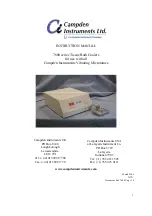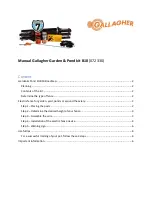
PiCUS TreeQinetic Manual
36
5.8.2 Vibrating Alert
If, during a running measurement, the measured value of one of the sensor modules exceeds
the set alarm limit, this is not only displayed graphically on the live data pages, but the vibration
alarm of the mobile device is triggered (if available).
5.8.3 Internal Calculations
5.8.3.1 Max. Pulling Force
The app automatically determines the maximum pulling force applied during the measurement.
This algorithm is designed to detect the typical plateau at the top of the load curve and sets
the point of maximum force directly behind
the first peak after reaching the plateau. As a
result, the measured force is then averaged
over a 5 second wide window around this
point.
For optimal result such a plateau should be created when the pulling test is carried out. To do
this, pull the tree to the maximum load you have targeted and keep the force there constant
for about 10 seconds before releasing the tree.
5.8.3.2 Rope Angle
The app automatically determines the rope angle at the time of the maximum force applied.
To do this, the algorithm uses the time point of the previously determined maximum pulling
force and averages the rope angle measurements over a 5 second wide window around this
point.
5.8.3.3 Resulting Inclination Angle
The inclination angle is measured in the inclinometers over the two horizontal, orthogonal
vector components. These 2 measured values are also stored in the measurement data files
as X and Y values. In the live display during the measurement and the result display in the
measurement data diagram of the inclinometers, only the resulting inclination angle from these
two components is shown for the sake of clarity.
The calculation is based on the Pythagorean Theorem:
𝛼 = √𝑥
2
+ 𝑦
2
2







































